Why mine on the West Coast?
The West Coast’s mineral resources have served as useful materials for people throughout New Zealand and around the world since the discovery of pounamu about seven to eight centuries ago.
After centuries of pounamu or greenstone being the most valued mineral in New Zealand, the arrival of Pakeha minerals such as gold and coal. Aggregates including gravel and sand, and limestone were also utilised to a far greater extent. Today the region’s prospecting, exploration, and mining efforts are expanding into heavy mineral sand resources containing titanium (in ilmenite), garnets, and rare earth elements.
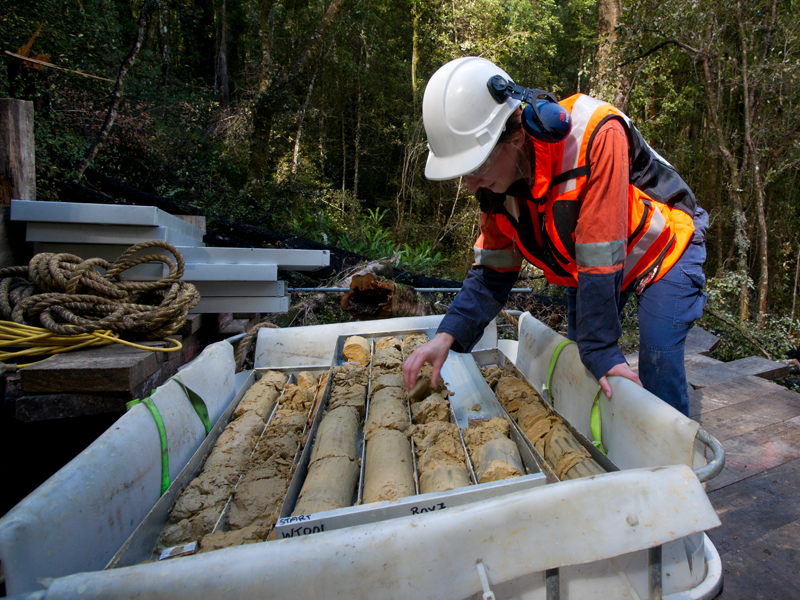
Human ingenuity has found many uses for the riches of the earth.

Pounamu has been prized historically and to the present day in tool making, weaponry, and of course in jewellery and decorative pieces.
By the 14th century, it was being carved, traded, and transported throughout the North and South Islands. To this day the stone also known as greenstone or nephrite is an important resource for Ngāi Tahu who gained legal ownership of all pounamu in New Zealand in its natural state (concentrated in the South Island and particularly the West Coast/Tai Poutini) in 1997 as part of the tribe’s treaty settlement process with the Crown, or State.
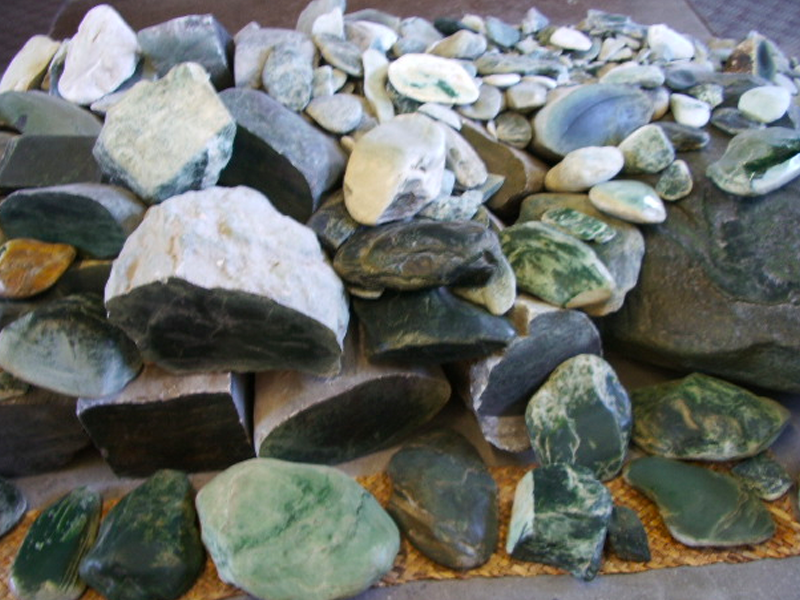
People all over the world have used gold for currency and jewellery for thousands of years. Today the precious metal also finds uses in medical and electronic technologies, from smart phones to satellite GPS communications, among industrial applications.
People have been mining gold on the West Coast since its discovery in 1864.
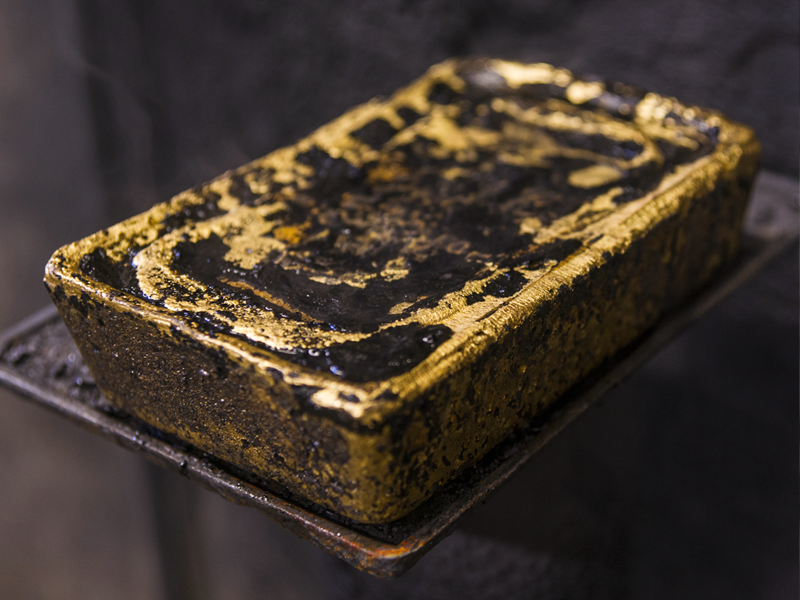
Coal produced on the West Coast, broadly speaking, has two markets and applications. The first of which is the South Island domestic market, in which people buy sub-bituminous coal (often referred to as “thermal coal”) for use in food production and processing (such as dairy factories and freezing works), in heating greenhouses year-round to grow and ripen vegetables such as tomatoes, cucumbers, capsicums, and aubergines. This coal is also used for space heating in some schools, universities, hospitals, and other public buildings.
As regards, the export market, bituminous coal (often referred to as “coking coal”) finds markets in India, Japan, South Korea, Australia, and China, among countries in the Asia-Pacific. This coal is used to make iron and steel, in the processed form of” coke”. This is used as an energy and chemical input to remove oxygen from iron ore (typically an iron oxide in its natural state) to transform it into pure iron, and subsequently, steel.

People have been mining coal on the West Coast since its discovery in 1864.
Mineral sands – ilmenite, garnet, and rare earth elements
As plate tectonics has pushed the mountains of the Southern Alps higher into the sky, time and weather have worn the mountains down, eroding and weathering them into gravels and sands. These gravels and sands have washed down rivers, becoming finer grained along the way, accumulating as coastal plains along the seashore of the Tasman Sea.
These same processes (also leading to accumulations of gold and pounamu) have laid down the terraces, river flats, and coastlines of the western South Island, and also deposits of heavy mineral sands containing ilmenite (an iron oxide also containing titanium), garnet, and many of the 17 so-called “rare earth elements”.
These resources have been discovered and analysed historically, but to date have not been developed. Changing market conditions and new mining methods and technologies hold the promise of developing these resources in the near future.
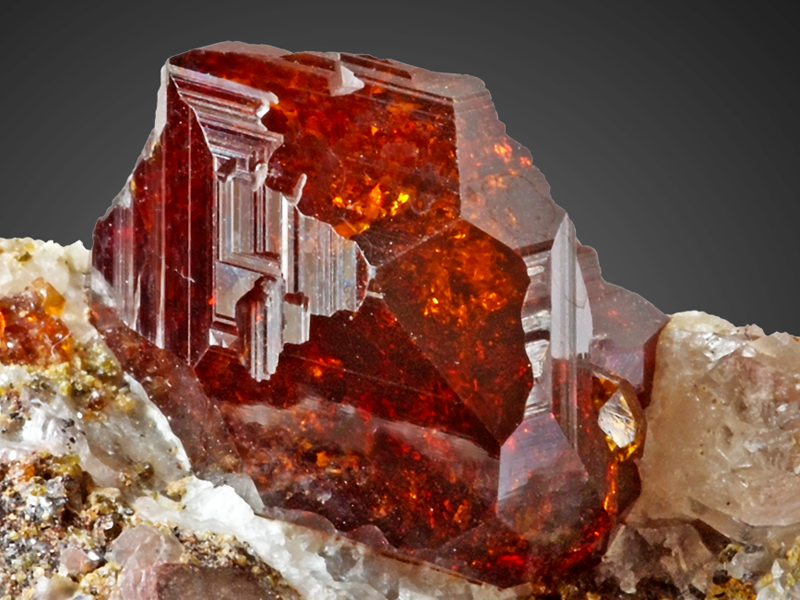
Garnet has many uses, including industrial applications for sand blasting, water-jet cutting, and in sandpaper.
Ilmenite is a source of titanium, used routinely around the world in paints, printing inks, fabric colouring and pigmentation, papers, plastics, sunscreen, toothpaste, foods, and cosmetics.
Rare earth elements are not rare; the word has a much earlier meaning of “strange”. REEs are listed near the bottom of the periodic table, and occur in nature as oxides that are challenging to process for the pure metal. A small percentage of the heavy mineral sands on the West Coast contains REEs. To develop these will require more research and development, a realistic prospect given rising prices for these metals having many industrial applications, including to strengthen magnets (for wind turbines), in batteries for electric vehicles, and as industrial catalysts.
As in much of New Zealand, bulk quantities of rock and gravel are needed for infrastructure and construction. Limestone is used in its crushed form as a soil conditioner in farming, reducing the fertiliser requirement, and also in water treatment, including for municipal drinking supply.

Minerals are a source of useful, valuable, and essential materials to different people for different reasons.

They can be taken from the top of the ground, below the ground (through either opencast or underground mining) or, in some instances, recycled.
Given the use, value, or desire people have for minerals, it is always worth someone’s while to supply them.
Minerals are found all over the world, but only some areas are they found in high enough concentrations to have an identifiable value, and cost of recovery. Where this occurs, a mineral deposit can be considered economic.
If miners (either working individually, or as a group or organisation) can recover a resource and deliver it to a customer at a lower cost than the price customers are willing to pay for it, then mining is clearly worthwhile in that instance.

Within New Zealand, people working in mining earn higher incomes than in any other sector in the economy, or at least most other sectors, depending on which measure is used.

The StatsNZ figures below show the breakdown of median and mean hourly and weekly earnings for the 2021 year.
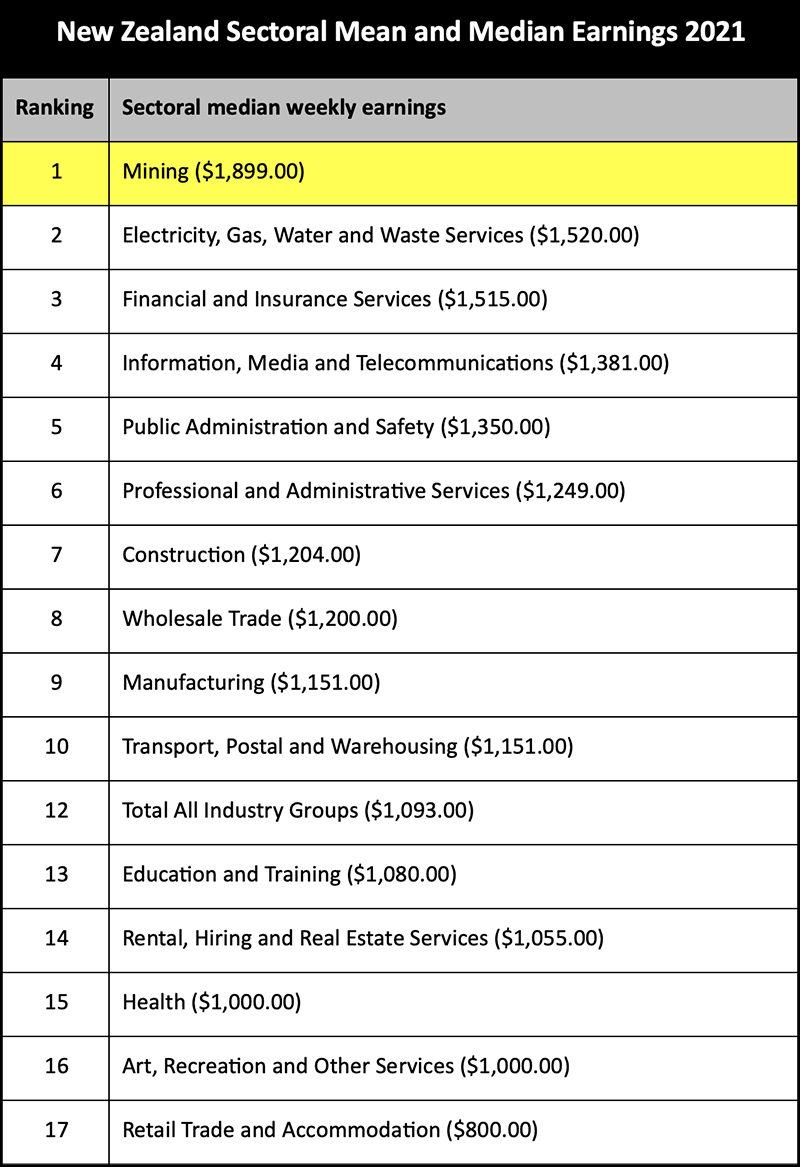
Ministry of Business, Innovation, and Employment Figures show the average income for people working in petroleum and minerals sector earn about $96,000.00 per annum, almost double the average across all sectors nationally.
At a regional level, mining is among the largest sources of GDP, in the year ending 31 March 2022 it accounted for $183.3 million of regional GDP (7.7% of the total) and is the third-largest source of GDP in the region after dairy cattle farming, and electricity and gas supply.

See the graph below, based on Infometrics figures for 2022, for an outline of the mining sector’s overall contribution to the West Coast economy.
